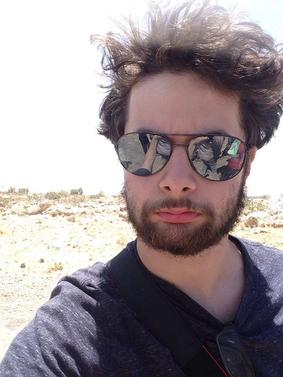
Iraq's mountain of death Telegraph reporter is first to witness devastation of trapped families
With such a coup, you might have expected the paper to splash on the report. It is a compelling, but calmly written first-hand account from the top of Mt Sinjar that mostly eschews the first person. There is more than enough meat in the copy to justify the top slot, which is instead given to the Revenue's latest move against wealthy tax avoiders.
On the dry mountain the Yazidis fight with the goats for the remaining water. In the distance, the lights of Islamic State checkpoints loom menacingly (Krohn writes).
Yesterday those stuck behind Islamic State lines began reporting the group's latest slaughter: hundreds of members of tehir arcane but colourful sect massacred for refusing to convert to Islam.
On the mountain the rumours from their relatives only added to the sense of panic and despair. One man told this reporter...that jihadists had stormed through his village, killing every adult healthy male. Others talked of hundreds of women being abducted. Reports came in elsewhere of women and children being buried alive.
The Guardian also has a first-person account from Iraq. Martin Chulov reports from Duhok that half the people who had been stranded on the mountain had reached safety via Syria. Unfortunately, the paper doesn't tell us where Duhok is in relation to the mountain or even give it a dot on the map on its inside spread. But again, it is a compelling read, calmly told.
Hang on, didn't the Telegraph have the first Western journalist on the mountain?
Ah, it's the same reporter. Maybe it's a syndicated piece. But the style here is quite different from that in the Telegraph:
Mount Sinjar stinks of death. The few Yazidis who have managed to escape its clutches can tell you why.
'Dogs were eating the bodies of the dead,' said Haji Khedev Haydev, 65, who ran through the lines of Islamic State jihadists surrounding it.
On Sunday night I became the first Western journalist to reach the mountain where tens of thousands of Yazidis, a previously obscure Middle Eastern sect, have taken refuge from the Islamic State forces that seized their largest town Sinjar.
I was aboard an Iraqi Army helicopter and watched as...
A quick google reveals Krohn's youthfulness and precocious background - and a link to a Sunday Telegraph article starting "Mount Sinjar stinks of death..."
Sure enough, it is the selfsame piece published in the Mail today.
The strange thing is that it wasn't printed in the Sunday Telegraph. A few paragraphs have been woven into a wrap splash for which Krohn is given top billing in a joint byline, but much of the best material, including the comments of the people he met on the mountain, is missing.
Nevertheless, he was pleased enough to tweet:
My first ever Sunday @Telegraph feature. And I got to cobyline with @Richard_Spencer! http://t.co/9kpYApS94n
— Jonathan Lee Krohn (@JonathanLKrohn) August 9, 2014 But wouldn't you want also to make more of the one available eye-witness account from the mountain where we had been given to understand tens of thousands faced dying of thirst?
Even today, there is no link to that original despatch from Krohn's later account or from any other report of the day's events. Is this deliberate, and if so why?
And as to the Mail, what was the deal that led it to print the whole of Krohn's first effort, but without the front-page "first man up the mountain" fanfare we have come to expect from the paper?
It may not matter much in the grand scheme of things, but it's all very peculiar.
In the meantime, here's a taste of the 13-year-old Krohn in action:






 RSS Feed
RSS Feed


